Get the weekly SPARTANAT newsletter.
Your bonus: the free E-Book from SPARTANAT.
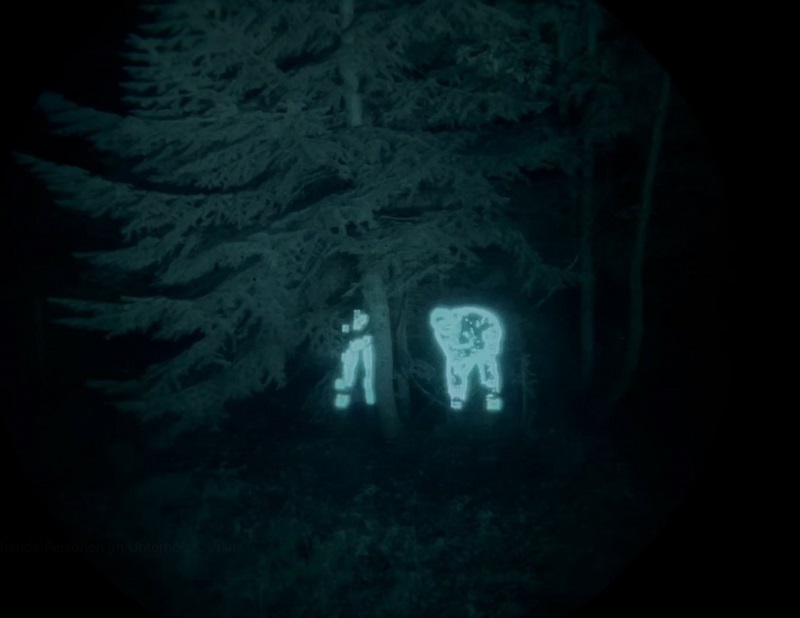
See everything with F-COD
The increasing proliferation of modern night vision technologies poses a threat to the unique capability of regular armed forces and security agencies to successfully conduct operations in limited visibility.
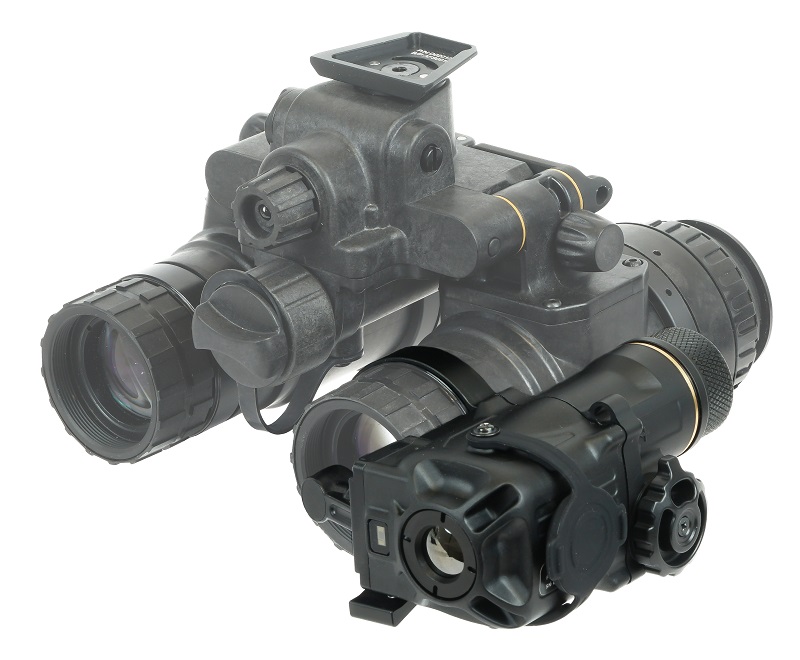
Conventional night vision or night vision goggles based on image intensification no longer meet the current state of the art. Experiences of the U.S. Army and the U.S. Marine Corps show that the recently introduced Fusion Goggles by L3Harris, which combine modern and powerful third-generation image intensifier goggles with a thermal imaging channel, lead to a significant increase in soldiers' night combat capability. This technology is now available in a somewhat streamlined version on the civilian market, making it accessible to potential adversaries as well.
L3Harris is the world's leading manufacturer in the field of fusion technology. The products of the U.S. company are distributed in Central Europe by IEA MIL-OPTICS. Night vision devices like the FGE-PI Fusion Goggle are already in use by the special forces of the German Bundeswehr.
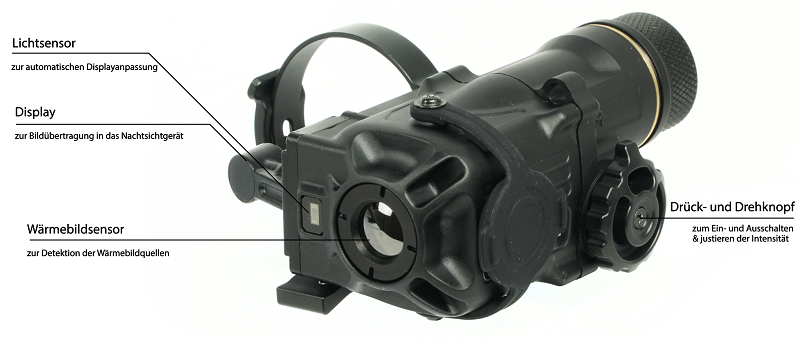
To avoid falling behind, a rapid modernization of night vision systems for regular units of the Bundeswehr is also necessary. With the Fused Clip on Device (F-COD), IEA MIL-OPTICS GmbH now offers a commercially available, ITAR-free system that can quickly and efficiently enhance the combat value of existing night vision goggles and enable image data fusion. At a fraction of the cost of a binocular night vision goggle, any night vision goggle in use could be upgraded to a full-fledged fusion goggle.
Fusion
Fusion devices allow combining the advantages of both technologies - image intensification and thermography/thermal imaging - through image data fusion. The fusion approach involves overlaying the thermal image on the optical or image intensifier image. The basic idea of this approach is to merge at least two image sources into an improved image. This makes it easier to handle specific tactical challenges on the battlefield.
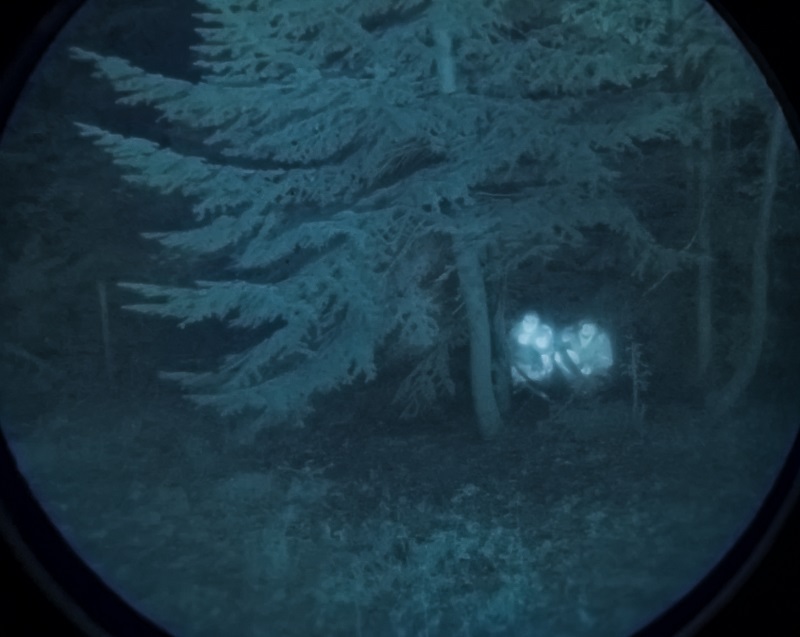
For example, even at distances of less than 10 m, it is extremely difficult to detect individuals who are not moving or hiding using image intensifiers. Especially when they are leaning against trees or bushes, in tall grass, or very low-light areas. Overlaying the thermal image with the low-light image results in clear differentiation between temperature differences of buildings and vegetation compared to body temperature, making the person clearly visible even at greater distances.
The sensitive detector with a resolution of 640 x 512 provides very high detail and thus increased range. Through various modes like Black/Hot, Target Enhancement, and Outline, the user can optimize the device for various situations. HERE is the complete datasheet.
The device can be quickly attached to the night vision device via quick release without the need for adjustment.
With an optional eyepiece, the IEA F-COD attachment device can also be used as a handheld thermal imaging device. The F-COD is also available with the addition of "EB" (External Battery) with an external battery compartment instead of an internal battery. The weight of the F-COD EB is under 80 g. Both the F-COD and F-COD EB can be externally powered - for example, through a Y-cable via the battery compartment of a night vision goggle. The image of the F-COD can be transferred to external devices such as monitors, storage media, or head-up displays via a data cable if needed.
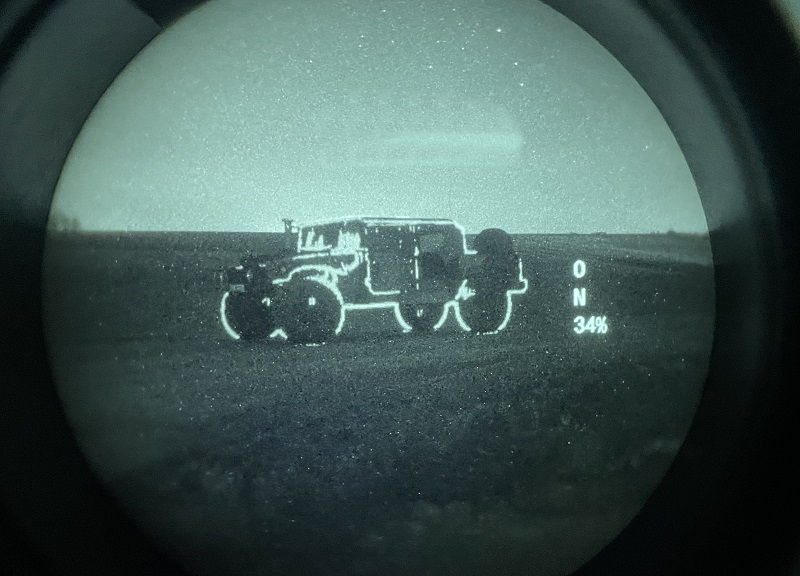
The F-COD offers three basic modes:
- Low Light
- Highlight
- Outline
The intensities of the individual modes can be finely tuned to the user's preferences. The Automatic Gain Control (AGC) adjusts the thermal image sensor to various temperature conditions, providing optimal contrast between the heat source and the surroundings. An optional automatic or manual brightness adjustment, regulated by a light sensor, ensures optimal image display and reduces the risk of glare damage.
Especially the Target-Enhancement function calculates persons or objects that stand out clearly from the background and only presents them as a thermal signature. Thermal disturbances are completely eliminated. Thus, there is a familiarly sharp and high-resolution residual light image with a clearly defined and easy-to-recognize thermal image signature in Outline or White/Hot mode.
Available for F-COD from 3,680 euros at IEA Mil-Optics
IEA Mil-Optics online: i-e-a.de
SPARTANAT is the online magazine for Military News, Tactical Life, Gear & Reviews.
Send us your news: [email protected]
Ad
similar
Get the weekly SPARTANAT newsletter.
Your bonus: the free E-Book from SPARTANAT.


